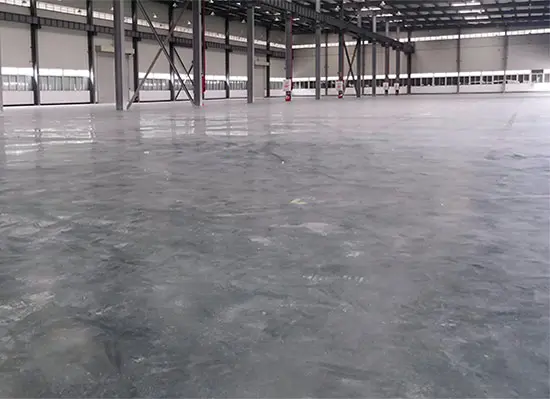If you’ve ever walked through a factory, warehouse, or parking garage, you’ve probably seen the same issue — concrete floors that dust, crack, or wear down over time. It’s a common headache for builders and property owners alike. But there’s a simple, long-lasting solution: concrete hardeners.
These products make ordinary concrete floors tougher, denser, and more durable, preventing dusting, cracking, and surface wear — even under heavy loads and constant traffic. Let’s break down what they are, how they work, and why they matter.
What Is a Concrete Hardener?

A concrete hardener, sometimes called a concrete sealer or densifier, is a water-based, non-toxic liquid that penetrates deep into the concrete surface — usually about 3–8 millimeters. Inside the concrete, it reacts with free calcium to form calcium silicate, a strong compound that fills the tiny pores and strengthens the entire surface structure.
The result? A denser, harder, and dust-free floor that can handle pressure, abrasion, and daily wear for decades.
Types of Concrete Hardeners and How They Work
There are three main kinds of concrete hardeners — each with its own features and best uses.
1. Inorganic Hardeners (Most Common Type)
Main Ingredients: Sodium silicate, potassium silicate, magnesium fluorosilicate, nano silica, and aluminum oxide.
How They Work:
These hardeners seep into the concrete and react with calcium hydroxide — a byproduct of cement hydration. The reaction creates additional calcium silicate hydrate (C-S-H), the same compound that gives concrete its natural strength. This process fills internal gaps and makes the surface denser and tougher.
They’re ideal for most industrial spaces such as parking lots, warehouses, and workshops.
2. Organic Hardeners (Special-Purpose Type)
Main Ingredients: Epoxy resin, polyurethane, or acrylic with curing agents and hard mineral fillers like quartz or corundum.
How They Work:
These form a continuous protective film over the surface rather than penetrating deeply. The resin layer seals the floor, making it more elastic, resistant to corrosion, and easier to clean.
They’re perfect for environments with special needs — like food processing plants (acid and alkali resistance) or electronics factories (anti-static floors).
3. Hybrid Hardeners (Heavy-Duty Type)
Main Ingredients: A mix of inorganic silicates and organic resins, sometimes with reinforcing fibers such as polypropylene or steel fibers.
How They Work:
This combination delivers both strength and flexibility. The inorganic component penetrates and hardens the surface, while the organic resin adds toughness and crack resistance. Reinforcing fibers help prevent peeling and improve load-bearing capacity.
Hybrid hardeners are commonly used in high-traffic, high-load areas — such as airport runways, ports, and logistics centers.
Why Use a Concrete Hardener?
Ordinary concrete has lots of microscopic pores that make it weak, dusty, and prone to cracking. Over time, pressure, moisture, and traffic break it down.
Concrete hardeners solve this by sealing and reinforcing those pores, effectively turning your floor into a solid, steel-like surface. After treatment, the floor’s hardness, strength, and abrasion resistance improve dramatically. It also becomes water-, oil-, and chemical-resistant.
Because the surface is denser and less porous, maintenance is easy — no waxing or heavy cleaning chemicals needed. Just a quick rinse with clean water is often enough.
While untreated concrete may start to dust or crack after six months, a hardened floor can last 30 years or more with regular use.
How to Apply a Concrete Hardener
You don’t always need professionals — with the right tools, it’s possible to do it yourself. Here’s how:
- Clean the floor. Remove dust, grease, and debris so the hardener can penetrate properly. Repair any cracks or holes and roughly grind the surface to make it smooth.
- Apply the hardener. Mix it with water (usually 1:3 to 1:5) and spray or roll it evenly across the surface. Let it soak in and react.
- Repeat the process. After the first layer dries, clean the surface and apply a second coat for deeper penetration and longer-lasting protection.
- Polish the surface. Once the hardener has reacted (about 24 hours later), use a floor grinder or polishing machine with resin pads to create a glossy finish. Over time, the shine will naturally increase as the floor is used.
The Bottom Line
Concrete hardeners are one of the simplest, most cost-effective ways to extend the life of concrete floors. Whether you manage a factory, a warehouse, or a parking garage, applying a hardener can transform a dusty, brittle surface into one that’s strong, glossy, and easy to maintain — and it’ll stay that way for decades.

